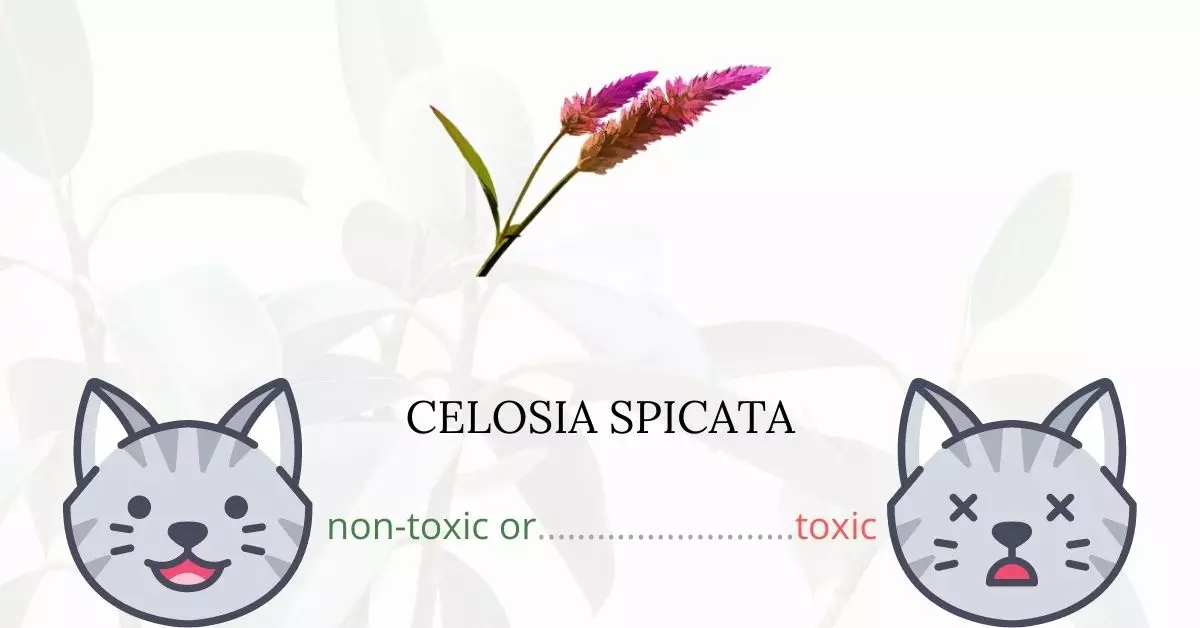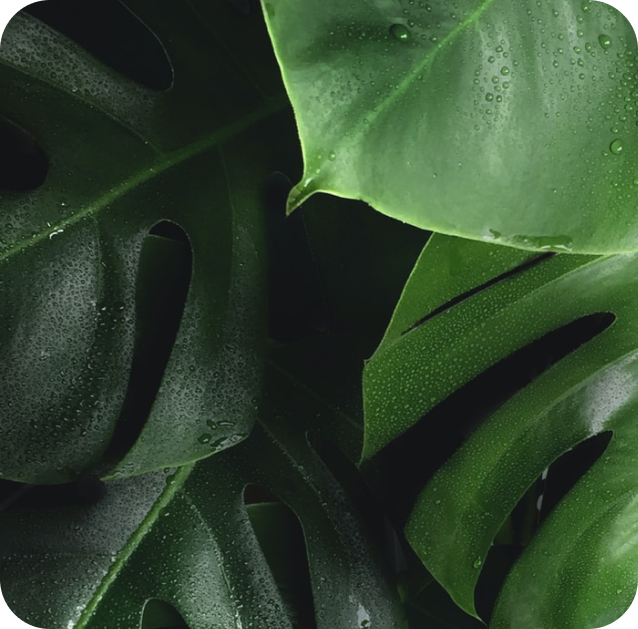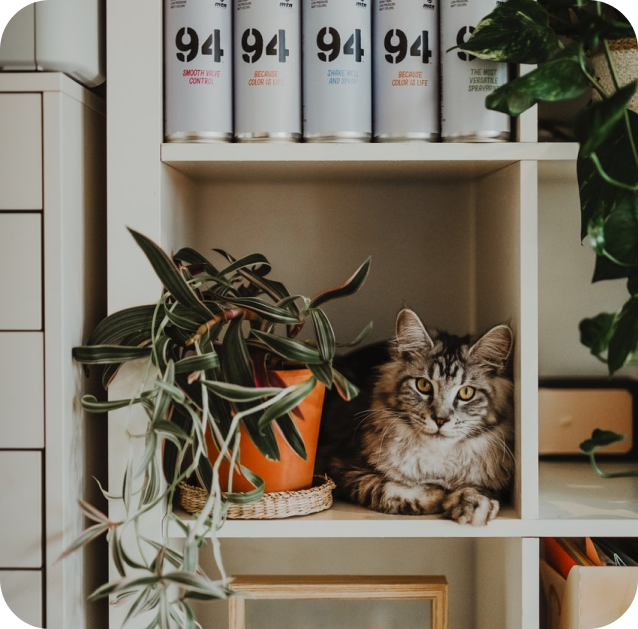Celosia Spicata, also known as the Flamingo Flower and Wheat Celosia, is not toxic to cats.
This article is a culmination of collaborative efforts with a team of experienced DVMs (doctors of veterinary medicine). Their expertise, coupled with our thorough research on high-authority websites like ASPCA and PetMD, ensures that we provide precise and current information regarding the potential risks associated with various plants, particularly Celosia, and their effects on cats.
Notably, Celosia Spicata is listed by the ASPCA (American Society for the Prevention of Cruelty to Animals) as a non-toxic plant for cats, dogs, and horses. However, while the plant may not contain harmful toxins, it’s always prudent to monitor and limit your cat’s interaction with it to ensure their safety and well-being.
Can Cats Eat Celosia Spicata?
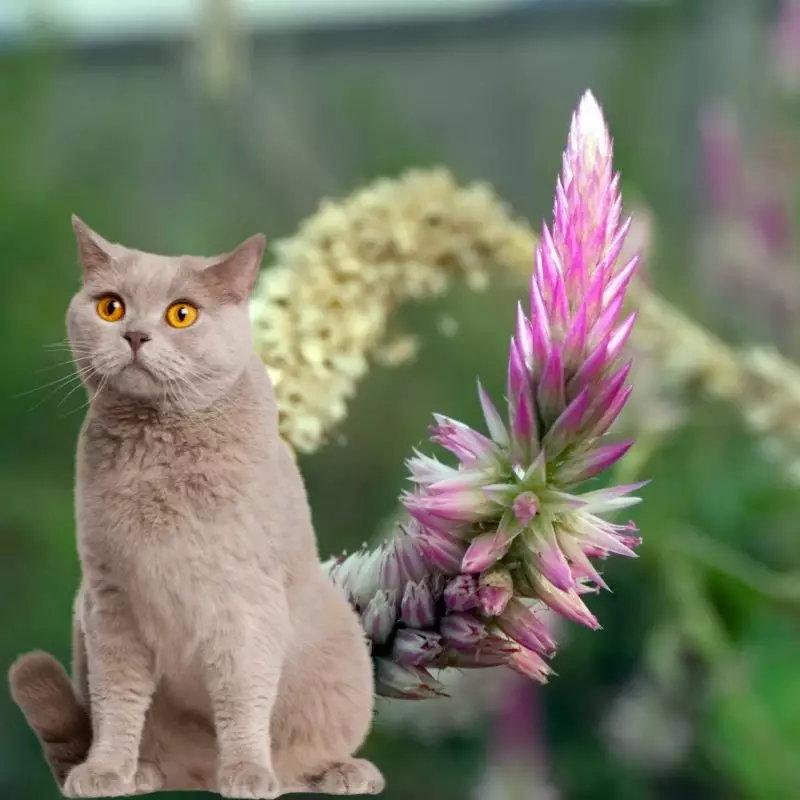
Cats can eat a small portion of Celosia Spicata. This will not cause them to suffer from long-term illnesses or fatalities. But, as a general reminder, an excessive amount of plant materials is not good for cats. Due to the fact that felines are carnivores, their bodies cannot properly digest plants. In case they consumed large portions of plant matter, it may lead to indigestion.
Cat owners should also watch out for the chemicals used on plants. As much as possible, use natural and cat-friendly deterrents to prevent poisoning in your cats.
What is Celosia Spicata?
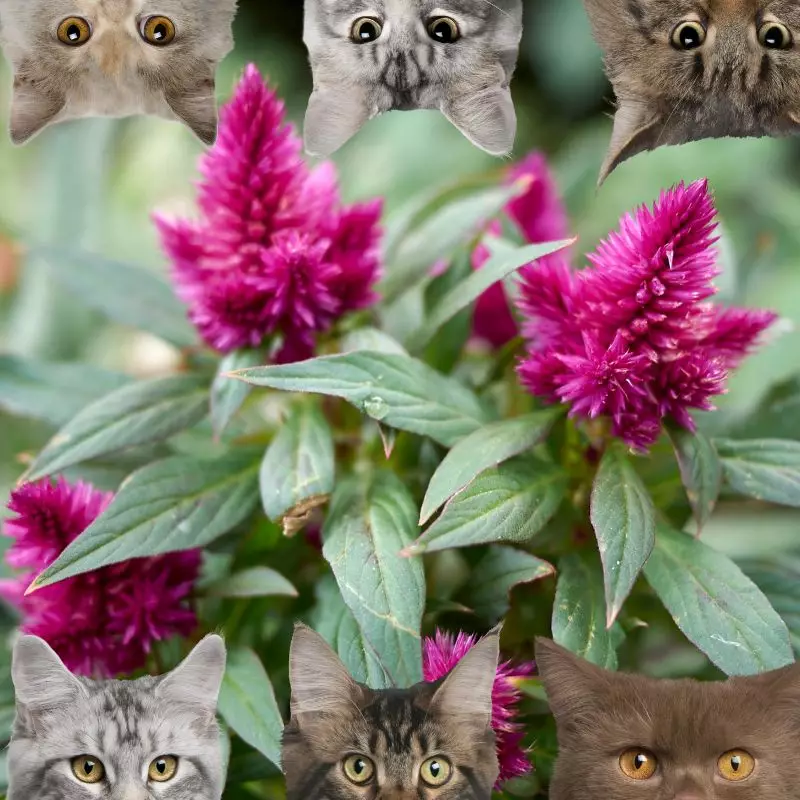
Celosia Spicata is the botanical name for Flamingo Feather or Wheat Celosia. It is a summer annual or short-lived perennial that is planted as an ornamental for its unusual, upright flower spikes that resemble a sheaf of wheat, thus the popular name wheat celosia. Its silvery-pink, wheat-like flower plumes make it appealing in the garden and in dry arrangements.
Celosia Spicata branches grow with numerous robust stems to make a bushy yet open, upright plant. The plant can grow to be two feet wide and three feet tall. Celosia Spicata has alternating, medium to dark-green leaves which might be speckled or burgundy in color. The leaves are about two to six inches long, smooth and whole, oval or lance-shaped, and heavily veined.
The Celosia genus from the Amaranthaceae family is native to Africa, North America, and South America. Most cultivars are edible and used as a food source. Some varieties are also cultivated as ornamental plants.
Keeping Cats Away From Celosia Spicata
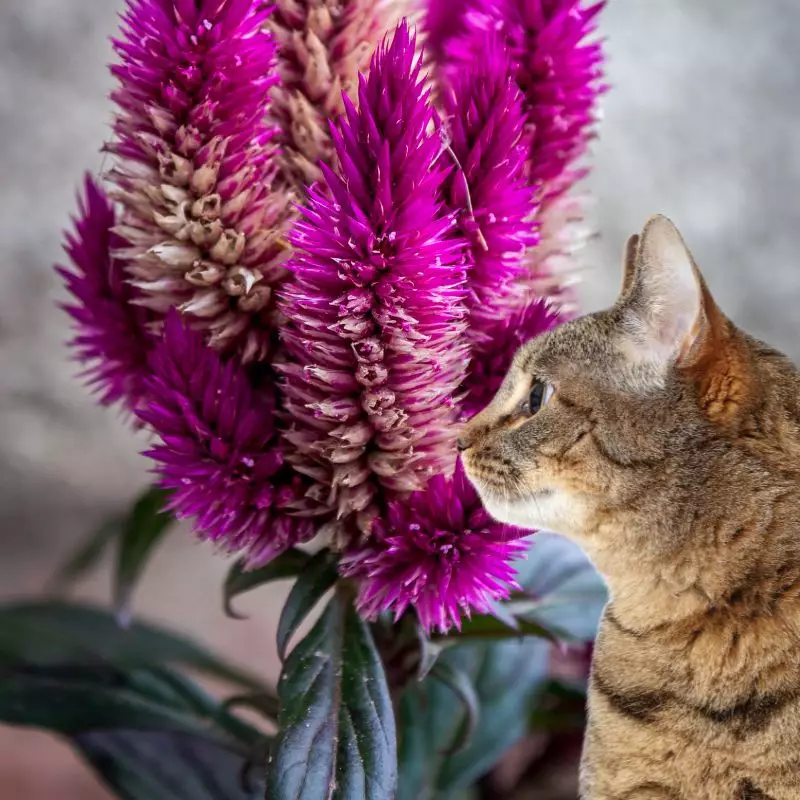
Aside from protecting your cats, you may want to protect your plants from your cats’ paws and teeth. We are giving you some tips on how to protect your plants from your cats.
Your cats will be more interested in your plants if they are placed in a large container that can be mistaken for a litter box. You may try replacing your plant boxes with smaller plant pots.
Keeping your cats engaged indoors is also important. Mentally stimulated cats are less likely to take interest in your houseplants.
Use deterrents or make your plants undesirable by spraying vinegar solution on them. Cats detest the sour smell of vinegar.
Plants to Avoid For Your Cats
If you are a cat owner and unsure if the plants growing in your yard are harmful to your cats, check out this list of toxic plants for cats. You can also check our list of non-toxic plants for cats.


